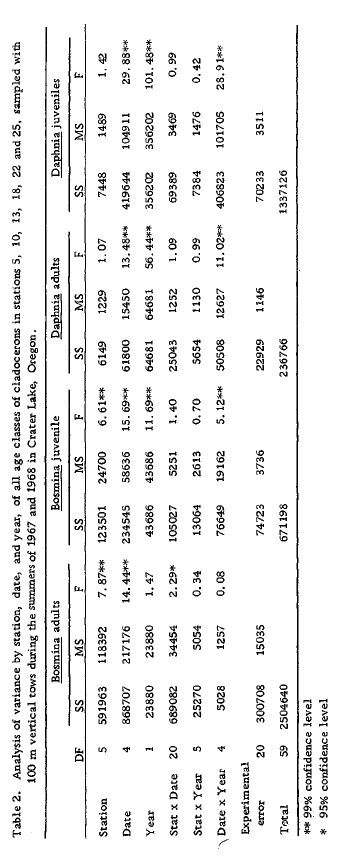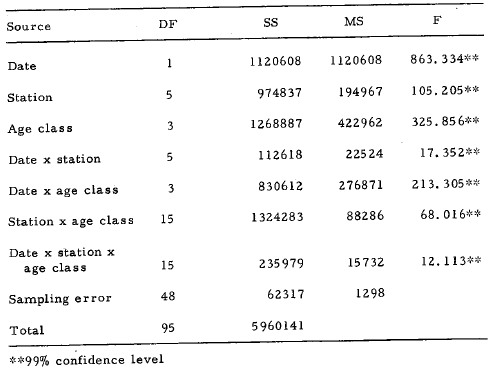The highest densities of B. longispina were recorded throughout the summer of 1968 at station 30. On August 28, 1968, station 30 had in excess of 1200 organisms. A greater number of B. longispina juveniles occurred in 1968 than 1967,although the abundance and seasonal changes in the adult population were not appreciably different.
Unlike the horizontal distribution of B. longispina, the numerical densities of neither age class of D. pulex illustrated any significant differences between stations sampled. In 1968 there were more juveniles than adults. A ratio of three D. pulex juveniles to one adult was observed on August 27 and 28, 1968, indicating an increase in population. When the population finally reached a maximum size is unknown.
An analysis of variance of the horizontal distribution data (Table 2) listed significant differences between stations and dates for B. longispina adults, with differences in years being significant only for juveniles. Differences between dates and years were listed for both adults and juveniles of D. pulex. There were no significant differences between stations for D. pulex. An analysis of the two samples per station taken in late August of 1967 and 1968 revealed an insignificantly small sampling error (Table 3). This resulted in large differences between stations, dates, age classes, and interactions.
Table 2. Analysis of variance by station, date, and year, of all age classes of cladocerons in stations 5, 10, 13, 18, 22 and 25, sampled with 100 m vertical tows during the summers of 1967 and 1968 in Crater Lake, Oregon.
Table 3. Analysis of variance of August 26, 1967 and August 27 and 28, 1968, when two samples were taken from 100 m to the surface in stations 5, 10, 13, 22, and 25.



